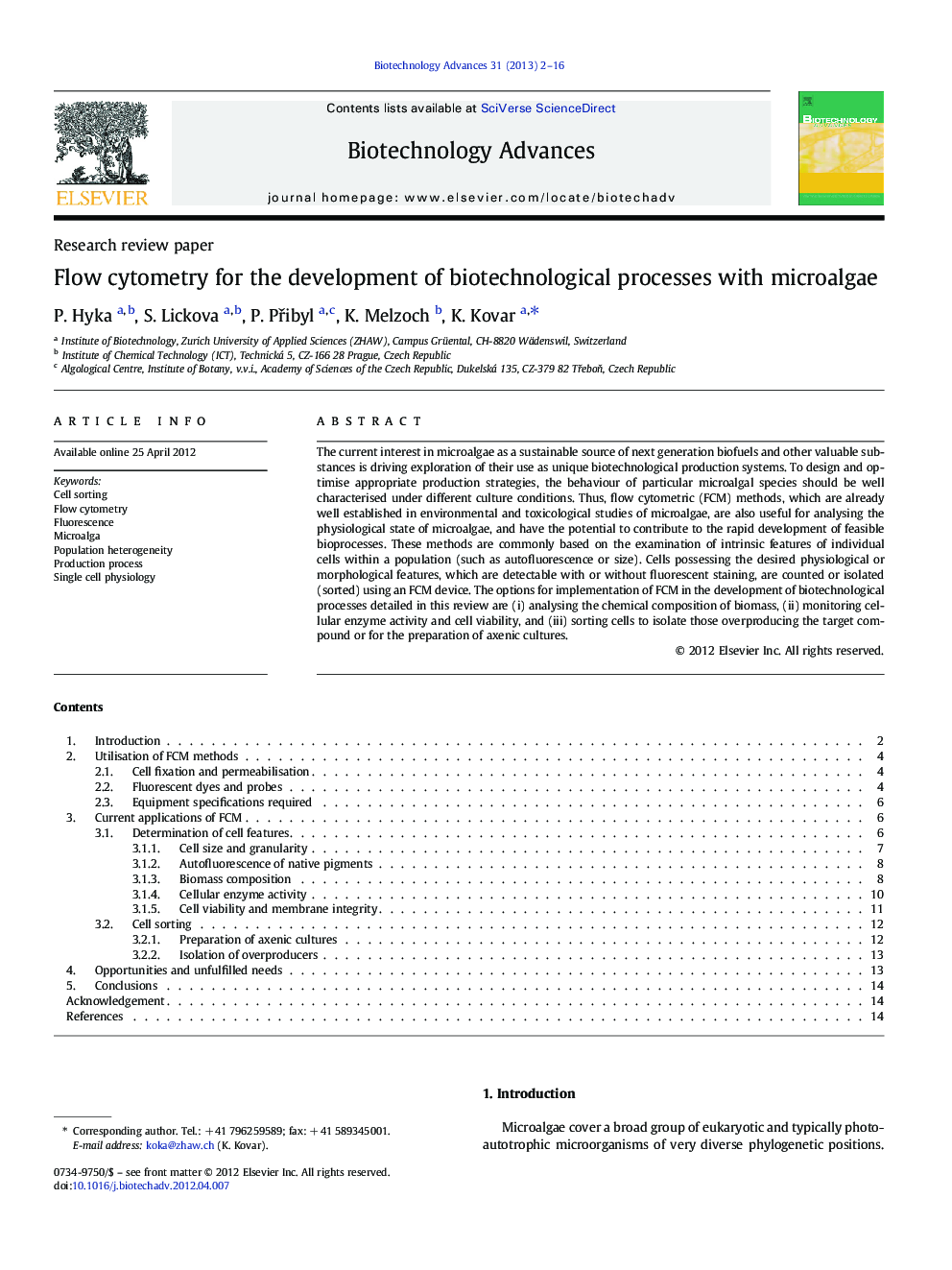| Article ID | Journal | Published Year | Pages | File Type |
|---|---|---|---|---|
| 10231527 | Biotechnology Advances | 2013 | 15 Pages |
Abstract
The current interest in microalgae as a sustainable source of next generation biofuels and other valuable substances is driving exploration of their use as unique biotechnological production systems. To design and optimise appropriate production strategies, the behaviour of particular microalgal species should be well characterised under different culture conditions. Thus, flow cytometric (FCM) methods, which are already well established in environmental and toxicological studies of microalgae, are also useful for analysing the physiological state of microalgae, and have the potential to contribute to the rapid development of feasible bioprocesses. These methods are commonly based on the examination of intrinsic features of individual cells within a population (such as autofluorescence or size). Cells possessing the desired physiological or morphological features, which are detectable with or without fluorescent staining, are counted or isolated (sorted) using an FCM device. The options for implementation of FCM in the development of biotechnological processes detailed in this review are (i) analysing the chemical composition of biomass, (ii) monitoring cellular enzyme activity and cell viability, and (iii) sorting cells to isolate those overproducing the target compound or for the preparation of axenic cultures.
Related Topics
Physical Sciences and Engineering
Chemical Engineering
Bioengineering
Authors
P. Hyka, S. Lickova, P. PÅibyl, K. Melzoch, K. Kovar,
